Chilled panels use less energy than conventional A/C and work in open spaces.
Many people beat the summer heat by cranking the air conditioning. However, air conditioners guzzle power and spew out millions of tons of carbon dioxide daily. They’re also not always good for your health—constant exposure to central A/C can increase the risks of recirculating germs and causing breathing problems.
There’s a better alternative, say a team of researchers from the University of British Columbia, Princeton University, the University of California, Berkeley and the Singapore-ETH Centre.
They call it the Cold Tube, and they have shown it works.
“Air conditioners work by cooling down and dehumidifying the air around us—an expensive and not particularly environmentally friendly proposition,” explains project co-lead Adam Rysanek, assistant professor of environmental systems at UBC’s school of architecture and landscape architecture, whose work focuses on future energy systems and green buildings. “The Cold Tube works by absorbing the heat directly emitted by radiation from a person without having to cool the air passing over their skin. This achieves a significant amount of energy savings.”
The Cold Tube is a system of rectangular wall or ceiling panels that are kept cold by chilled water circulating within them. Since heat naturally moves by radiation from a hotter surface to a colder surface, when a person stands beside or under the panel, their body heat radiates towards the colder panel. This creates a sensation of cooling like cold air flowing over the body even if the air temperature is quite high.
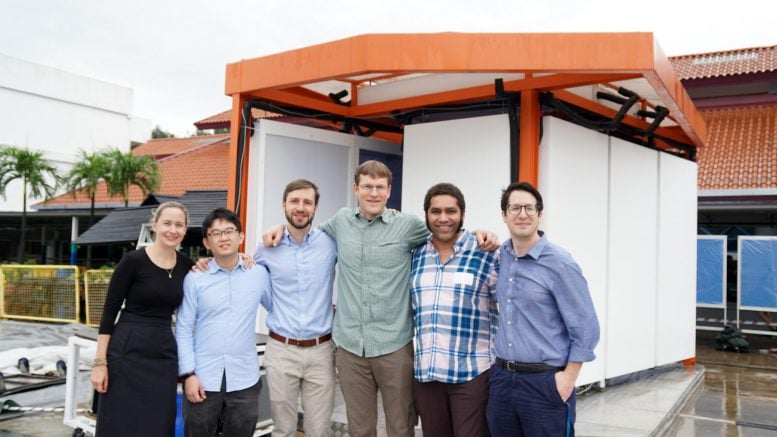
Cold Tube project team, from left: Lea Ruefenacht, Kian Wee Chen, Eric Teitelbaum, Forrest Meggers, Kipp Bradford, and Adam Rysanek. Credit: Nicholas Houchois
Although these types of cooling panels have been used in the building industry for several decades, what makes the Cold Tube unique is that it does not need to be combined with a dehumidification system. Just as a cold glass of lemonade would condense water on a hot summer day, cooling down walls and ceilings in buildings would also condense water without first drying out the air around the panels. The researchers behind the Cold Tube conceived of an airtight, humidity-repelling membrane to encase the chilled panels to prevent condensation from forming while still allowing radiation to travel through.
Cooling down the outdoors
The team built an outdoor demonstration unit last year in Singapore, inviting 55 members of the public to visit and provide feedback. When the system was running, most participants reported feeling “cool” or “comfortable,” despite an average air temperature of 30 degrees Celsius (86 degrees Fahrenheit). The panels also stayed dry, thanks to the special membrane.
“Because the Cold Tube can make people feel cool without dehumidifying the air around them, we can look towards shaving off up to 50 percent of typical air conditioning energy consumption in applicable spaces,” said Eric Teitelbaum, a senior engineer at AIL Research who oversaw the demonstration project while working at the Singapore-ETH Centre.
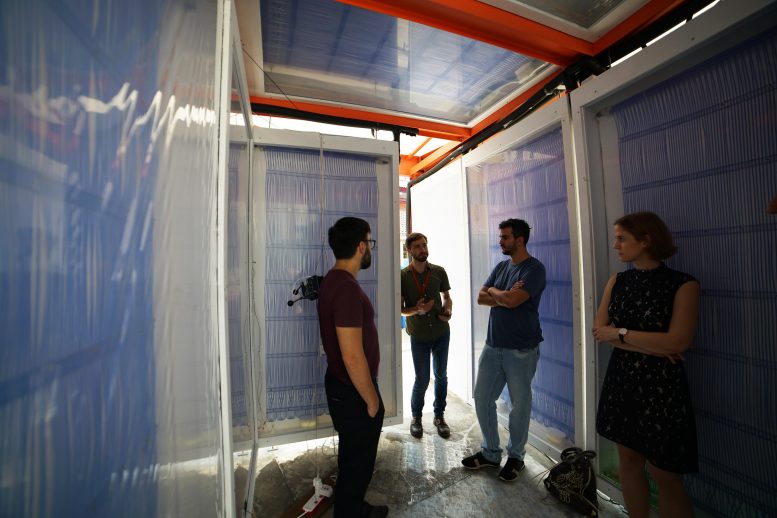
Inside the Cold Tube, thermally transparent membranes separate air cooling from radiant cooling, maintaining comfort without cooling the air or forming condensation. Credit: Lea Ruefenacht
“This design is ready. It can obviously be used in many outdoor spaces—think open-air summer fairs, concerts, bus stops and public markets. But the mission is to adapt the design for indoor spaces that would typically use central air conditioning,” he added.
Beyond the energy savings, technologies like the Cold Tube have a great future, says project co-lead Forrest Meggers, an assistant professor at Princeton’s school of architecture and the Andlinger Center for Energy and the Environment.
“Because the Cold Tube works independently of indoor air temperature and humidity, keeping windows open in our increasingly hot summers while still feeling comfortable becomes possible,” said Meggers. “The Cold Tube can offer relief in different regions, from North American homes and offices that currently rely on standard HVAC systems to developing economies that foresee significant need for cooling in the coming half-century.”
Keeping indoor air healthy during the pandemic
There’s another aspect of the Cold Tube that is particularly relevant in 2020, says Adam Rysanek.
“The COVID-19 pandemic has brought to the public’s awareness how sensitive our health is to the quality of the air we breathe indoors. Specifically, we know that some of the safest spaces in this ‘new normal’ are outdoor spaces,” said Rysanek. “As the climate changes and air conditioning becomes more of a global necessity than a luxury, we need to be prepared with alternatives that are not only better for the environment, but also our health. The idea of staying cool with the windows open feels a lot more valuable today than it did six months ago.”
The team is currently using the data collected in Singapore to update their projections of the Cold Tube’s effectiveness in indoor spaces globally. They plan to demonstrate a commercially viable version of the technology by 2022.
The Cold Tube is described in a paper published on August 18, 2020, in PNAS. It was developed with funding support from the Singapore National Research Foundation IntraCREATE SEED Grant program. The project was led by Adam Rysanek (UBC), Forrest Meggers (Princeton University) and Jovan Pantelic (UC Berkeley) and was administered by the Singapore-ETH Centre.
For more on the Cold Tube, read Mitigating COVID-19 and Climate Change With Innovative Alternative Cooling Strategies.
Reference: “Membrane-assisted radiant cooling for expanding thermal comfort zones globally without air conditioning” by Eric Teitelbaum, Kian Wee Chen, Dorit Aviv, Kipp Bradford, Lea Ruefenacht, Denon Sheppard, Megan Teitelbaum, Forrest Meggers, Jovan Pantelic and Adam Rysanek, 18 August 2020, Proceedings of the National Academy of Sciences.
DOI: 10.1073/pnas.2001678117

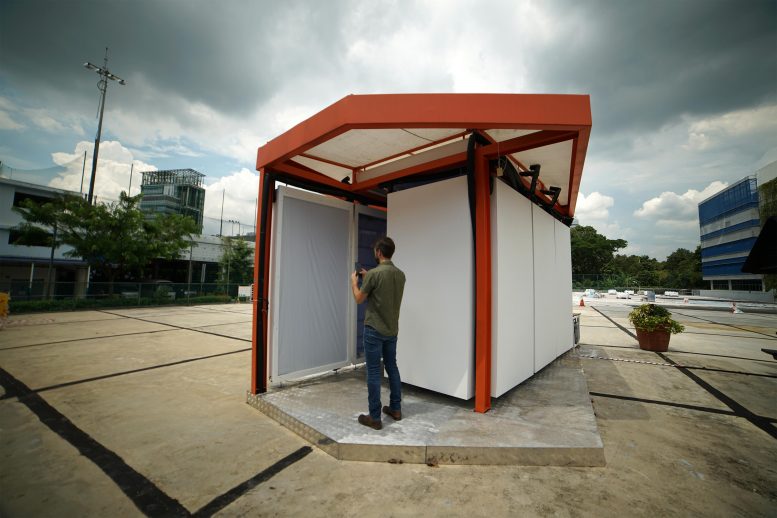
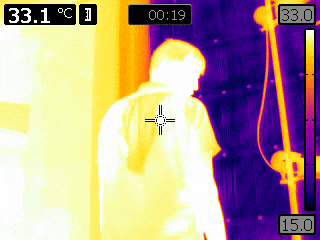


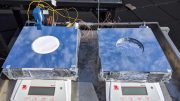

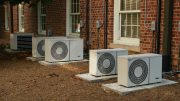

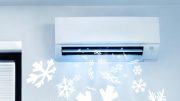
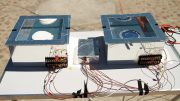
Game changers. The tourists will never go home, lol.
Most large scale buildings already use chilled water to cool fan coils. This still requires freon chillers, cooling towers and a lot of electricity. I don’t see how this would be economical on any other scale.
This is so cool! Can we get some for Florida, please? Ideally, if it could be used as a substitute for drywall, it would make for higher adaption rate and lower cost of implementation.
What is cooling the panels? Magic?
Great invention very well thought out im proud of you guys
This is by far be the most efficient way of cooling and even heating buildings. With the massive surface area you can use low temperature heating and high temperature cooling (LTH-HTC). By having an extremely low temperature offset the efficiency can be maximized and you only need a small refrigeration/heating system or maybe not even any. It might even be enough to circulate the water underground and utilize the thermal mass of the earth. You won’t get the campfire problem, because the thermal radiation will cool/heat all the surfaces and your walls should be well insulated. Have you ever been in a home with underfloor heating? Basically the same.
It’s really just taking the AC coil and putting it in a radiator instead of a blower. Maybe it cools more efficiently on surfaces facing it, but have you ever stood by a campfire on a really cold night? One side is tasty while the other is frozen. This will have the same problem. Maybe having one mounted above your bed would be nice, though.
But what chills the water? You need refrigeration or water loop ground system for it no mater what
May be a silly question, but if AC’s are so bad because of electrical consumption. What cools the water in the tubes?
Wow! That’s a lot of lies in the first two paragraphs of this article!
Unless it leaks its refrigerant (of which we’re using far more eco-friendly gases nowadays), an air conditioner does NOT spew carbon dioxide, because it’s just a heat pump, a pump with two different radiators and an expansion valve, which keeps the refrigerant a liquid on the hot side and a gas on the cold side.
Rather than lies, that sounds more like an abbreviated way of telling the story or a partial understanding by the reporter. You are right that chillers don’t directly emit CO2. The reference should clearly be to the CO2 emissions for the power production associated with AC use. If this system requires far less energy to achieve comfort as claimed, it results in an emissions reduction.
Wow, these comments were much more helpful in answering my questions than the article itself!
As others said, what keeps the water chilled? In order for it to pull heat from a person, it HAS to heat up, simple conservation of engery.
I’m guessing it’s pretty just a giant heat pump system without a box. Takes the warmed up water away, condenses the water so it loses it’s heat, the
when it comes back to the wall, lowers its pressure. But water is not really a good medium for this, as refrigerant is far better due to its low boiling point. You can’t just evaporate the water in the cooling section as easily. So maybe they have a separate water chiller, which begs again the question. What cools that water, how much power does it use? Perhaps they are using a refrigerant in the wall and the article missed that detail.
Or perhaps they just have massive radiators to draw the heat away from the water and the “chilled” water is just relative to the person’s body heat.
Ive been doing ac for 20 years in Florida, and have my own company for 3 years now. Went to school for it and have 100’s of hours in training courses. This article is written by an idiot…. Water doesn’t get cool on its own, you still have to run it thru a system that transfers heat with some sort of refrigerant. And I’m pretty sure the water pump is using just as many amps as a blower motor… Water has a better heat transfer rate than air, but I don’t see how this system would be more efficient pulling humidity. You have to pull latent heat (humidity) before you feel a change in the sensible heat (temperature).
As I understand, the idea here is to establish thermal comfort by allowing the body to have a higher net radiation (same radiation emitted as normal by the body but less radiation received from the cold walls). This allows allows the body to cool without a need for the air temperature to be lowered. It’s quite a different paradigm compared to AC. If the air temperature remains the same temperature, there is no condensation. Note that they particularly point it out as a viable outdoor cooling, where there is a constant air exchange.
In Singapore this was probably built on the harbour so they likely just circulated ocean water no need to cool it down a 20c ocean will cool an air space at 30c ezpz. Not something you can easily scale or build anywhere
Its water dropping from a high point w/a light breeze surrounding anyone or thing to absorb their warmth and socks it up. Its already been in use & proven. So who are all these TROLLS that gotta shoot it down. Obviously Un-Educated idiots making claims you Obviously have NO-CLUE. SHUT THE FUQUE UP.must be democrats on this because not one POSITIVE comment. If their is i Apologize. The others: JUST TROLLZ
Your statement oozes positivity…
Most comments here are due to scepticism, stemming from to a lack of understanding. Most of these comments can lead to a productive discussion outlining the merits and limits of this technology.
Only one comment stands out as personally insulting everyone in the thread.
Let me assure you that you have not understood this technology: It does not rely on a breeze nor on water dropping from above.
Let me also assure you that physics does not change with political affiliation.
Let me also assure you, I am not American.
I get the impression that a large part of the energy savings comes from preventing condensation on the panel surface, thereby avoiding the transfer of phase transition energy to the chilled liquid. There would be some savings from not cooling the entire space, but this doesn’t sound like it will make for comfortable work or living spaces, except in close proximity to the panels. Cool, humid spaces feel dank, so you would still want ventilation to prevent a buildup of water vapor. Also, the description of how thermal energy radiates is misleading. It implies, in my reading, that the chilled panels draw radiant energy off the human surface, making it feel cool. We radiate in all directions, but the panels reduce the energy being radiated at, or back at, the person positioned close enough to obviate the insulating qualities of air. That is probably not the primary source of whatever cooling the person feels. Most of the effect likely comes from convection induced by the temperature difference between the panels and the air, particularly air heated next to skin. Moreover, the chilled air will have lower capacity to carry water vapor, so condensation will occur somewhere if the temperature gradient and humidity are high enough, or the vapor must be reheated. The induced currents would allow the skin surface to reheat the cooler air, including water vapor, and possibly transpire some moisture, which provides much of the feeling of comfort associated with cooling, since phase transition energy is an efficient way to transfer heat. The effect of a panel in the ceiling would be almost entirely convective.
I’m not an expert on the subject , but possibly using the thermoelectric type plates for the cooling system …… They cost very little to operate and exchange heat very well .
The only problem with these cooler plates is traditionally they arent the most effective in a real world scenario … But they may work well enough to complete the task of cooling the water ….. These type thermoelectric plates are generally found in those tiny “coolers marketed as refrigerators ” most claim that you can obtain 30 degrees difference from the surrounding ambient temperature … I only thought I would put my 2 cents in because of all of the a.c./ refrigeration required comments …. But just an idea
From where the cooling pad get chilled water…you have to do something for generation of chilled water….???
Not new. Up on or have had this for years. Just people stealing other ideas and claiming it for the USA lol. Seriously we installed chilled walls and ceilings over five years ago
Chillled surfaces have indeed been around for very long. The novelty appears to be the avoidance of condensation on the chilled elements.
I hope they didn’t work long on that idea. It’s been around for a long time. Google chillers and chilled water loop.
I don’t think running that many water lines through a building in the walls is a good idea. There are too many other things in the walls, like electricity and other piping. No matter what is said, it will leak or condense. Refrigeration is still used to cool the water and the only time an A/C unit emits any type of gas is in heating with burning gas or oil. Otherwise cooling is just heat rejection. Good idea for outdoors. Not so much for a building.
Well, it is done though, more for heating however. There was a remodeling of a hospital and to save space, the heating was integrated in the walls. Makes cleaning easier, instead of having radiatora ont he walls collecting dust.
Dehumidification is necessary for the health of occupants. Mold growth in high humidity conditions is a major health hazard that causes respiratory problems and even cancer. This does not solve that problem, so I dont see this being in anyway a practical solution to any current problem.
Note that the demonstrated application is outdoors, so there is natural exchange of air. In a closed room there would have to be an aeration philosophy, like in any building. But remember that what they are proposing is very different from an AC. An AC cools the air temperature. This increases the relative humidity and leads to condensation. The idea proposed here allows the body to cool down radiatively without the air temperature being lowered.
Where does the CO2 come from, I know refrigerant can be an issue but it doesn’t contain CO2. Refrigerants are usually hydrocarbons that can be evaporated easily and re condensed…. In a closed loop this process does not produce CO2.
Most likely its an implicit reference to the CO2 emissions from electric power generation.
Of course the water goes through a chiller first. It is efficiently getting the heat from skin to water-chilled panel that matters here. I sleep warmer camping under a tree than the open sky, same reason. The ground may be frosted around the tree, but not under it. Ever temp the clear sky with a point-and-shoot? It reads amazingly cold and it cools down the earth by morning. This cold sky is Mother Nature’s air conditioner.
No one is “trolling” this idea by simply bringing up the laws of thermodynamics and the ways in which heat pump systems operate. Kudos for any company to go out on a limb and invest in new ideas. That is the only way we will ever achieve technology that will surpass our current norms.
However, with a degree in organic chemistry and knowledge of thermodynamic laws…nothing can get cooler without something else getting warmer. Those speaking out “geo heat pumps” and I believe one person was bringing up what is called Peltier Effect which is essentially a solid state heat pump. However, these are very inefficient per energy used so in no way would it be a positive net effect.
Also as stated, there is a reason that refrigerants are used instead of water in cooling loops…water doesn’t provide nearly the efficiency when in the phase change that refrigerants do. It is true that older refrigerants and even common ones used now still are many times more harmful than C02 in terms of greenhouse gas…there are current formulations being developed which has little to no effect on the ozone layer. Surprisingly, hydrocarbons such as isobutane and propane (think liquid at pressure in the tank and when allowed to vent to gas, the valves will get covered in ice) this is the phase change that powers the heat pump. Believe it or not, although they are flammable, their effect on the environment is essentially null and the amount actually stored in a residential heat pump system is not very large…along with the fact that leaks are rare in modern systems.
Lastly, the dehumidification which comes with heat pump system are one of the main reasons which make you actually “feel cool”…in addition to being generally more healthy in a given space (not allowing mold etc) Think about it, even if your outside in Arizona in 100 degree heat…it is for the most part not uncomfortable (especially if in the shade)…but go to Florida and even if it’s 88 degrees…you “feel” much hotter. Your body sweats and your sweat cannot evaporate as easily as it can in a dryer environment such as Arizona. So the dehumidification is one of the most over looked effects that modern air conditioning systems provide.
Thank you for bringing this up. The effect of the humidity on our well being is often not considered.
I’d argue the most overlooked in heating and cooling is the radiative effect. Ask an AC installer about humidity management and he will know, if he’s worth his money. Ask him about radiative effects and I would guess 9 out of 10 will return a blank stare.
This is remarkable invention of 2020, people who lives in hot weather areas can be benefited more with lowest price.
Another thing besides “what is cooling the water?”:
If the HVAC in use exchanges the air in the building, and the incoming air is filtered, then where’s the problem? In these times it is even more important to have fresh air inside the house. Of course it is more efficient to heat/cool by means of radiation rather than heating/cooling the air directly, but if you need fresh air in your house anyways? Besides, this has been around for soooo long. At least in Europe. Why the hype sounding article?
Don’t get me wrong. This has a lot of potential, and is very underrated in general, but this article seems to suggest that hvac systems are bad in general.
What is the cooling water?
But where does the condensate go? Here it’s 50% humidity indoors with the AC on and 77% outside. I need something that will dry the air, too.
The need for drying when using an AC is due to the chilling of air increasing humidity and leading to condensation. The proposed system does not (significantly) cool the air. The humidity requirements are thus quite different.
So there is a cooling tower or something to expell the heat that is absorbed some where. They failed to mention or show that part. That would be using a s#!t ton of electricity, water, treatment chemical the list goes on.
The article claims it uses 50% of the energy of air conditioning to achieve comfort. The most likely way used for chilling the walls is with the same chiller technology as for air conditioning, transfering the cold to water in the wall rather than to the air in the room as would be the case in air conditioning.
The total installed cost of a chill water cooling loop and making buildings out of cooling panels would seem to be prohibitive. This may have application in specialty areas but generally this seems to be a terrible idea. People and furniture would cast radiative shadows for one. Somebody got a Master’s thesis out of this and that’s where it should end
I always say to understand nature you must understand it’s molecules. A rooms temperature can be easily controlled if we control the temperature of the molecules in the room. If we put wall paper like wrappings on the walls and ceilings that prevent the transfer of hot or cold temperature this would eliminate the ability for rooms to get cold or hot from walls. Then if we put in these Cool Tube walls in rooms that cool and heat then we will have an enclosed environment where the outside air temperature doesn’t affect the inside air temperature. Then if we also make furniture and beds with the Cool Tube design we could sit and sleep comfortably inside. Then if we were to put fans that pushed that warmed or cold air around the room we would have a comfortable room. WE could even make better Cool Tubes that use the energy of the Sun and wind to also help cool and heat the room. We could make towers of Sun heated and night air cooled water or oil towers that we use to circulate water or oil to be heated or cooled and then circulated throughout the Cool Tube and furniture. The Cool Tube walls and furniture could have connecting systems that allows them to be moved in the room or to any other dwelling if one decides to move. People could actually start their own companies now and get rich selling these new type of walls that heat and cool. Plus these Cool Walls are actually much better for our environment because they don’t subtract water content from our Earth’s humidity which is good because the Earth needs all the humidity it can get so that the Earth can create clouds which are the Earth’s ONLY defence against the hot rays of the Sun and also clouds are Earths ONLY rain/water producing thing on our planet! Without clouds we are doomed! We have a much worse global warming problem now because the Earth doesn’t have enough clouds to stop the Sun’s hot rays! Get ALL rooms worldwide enclosed in Cool Tubes and we will see the planet get cooler. Stop flying those gigantic cigar shape vacuum/heating and polluting machines we call jet engine airplanes and start again flying propeller airplanes we would immediately start seeing a cooler planet. Jet planes exhaust temperatures ranges from 800 to 1200 degrees for passenger planes and from 1200 to 2500 degrees for military planes. Plus they pollute our atmosphere! ALL of us on Earth live in this bubble that we call an atmosphere that surrounds this floating gigantic rock we live on called Earth! The cool air molecules of outer space invades our bubble daily but it is only so cold. I read where the temperature in the upper atmosphere use to be around 32 degrees below zero. But us humans have been putting up these jet planes and also rockets which is heating up our bubble. We either stop it now or soon all the ice and snow on Earth will have melted and we are then in for a whole new weather pattern worldwide which we will not like! Also we have to stop driving combustion engine vehicles and start using electric vehicles or other means of transportation. If we stop using rockets, jet engine planes and combustion engine planes then the Earth’s humininty would increase and clouds would form and then there would be less of the Sun’s hot rays reaching the Earth. Then we need to Cool Cube our homes. Doing all this will surely end this global warming problem without even having to shut down any industries pollution problems!
This article didn’t answer the most obvious questions which are how the water is chilled and the efficiency compared to other cooling tech.
From the article: “[…] we can look towards shaving off up to 50 percent of typical air conditioning energy consumption in applicable spaces,” said Eric Teitelbaum.
I suspect the chilling method is the same as for the standard cooling devices.
At least as explained in the article, this entire idea makes no sense whatsoever. People certainly radiate heat; but, that radiated heat goes somewhere outside the person’s body. Absorbing that radiated heat in no way cools the person. The person is only cooled by contact with cool stuff, like air or water. This pipe scheme just brings down the air temperature somewhat and prevents the walls or ceiling from getting hot and radiating heat itself. In addition, it sounds expensive and high maintenance.
Hi Stewart, the article indeed doesn’t explain it but the physics is sound. Incidentally, you almost explain it in your comment. Every object radiates heat. This increases rapidly as temperature increases. Keeping a surface colder thus lowers its radiative emission. Every object that emits radiation also absorbs radiation of the same spectrum. So when the surrounding walls are cooled, the infrared radiation the body receives is lower than before. The body thus has a higher net radiative emission, which means it dumps heat towards the colder walls. No physical contact is required for that. You know the effect of remote heat transfer well from standing in the sun (a very hot body). The heat you (a cooler body) feels is the the extra radiation your body absorbs. There is no object between earth and the sun that allows a physical contact for that heat transfer. The cold wall is just the reverse. In that case you are the hotter body, emitting more than what it receives from the colder walls.
Sounds too good to be true, and all that.. Plus, how are you going to fit panels on all the walls where people live? Doesn’t seem practical, and another thing that comes to mind is the fact that air conditioners dehumidify, which aids in cooling and preventing mold spores etc.
Dehumidification is still an important function for mitigation of mold growth and should be explored in this project.
First thing I thought of was someone shooting the potus totally uncalled for…. stupid advertising probably intentional..crosshairs didn’t help totally stupid and lame
This is mostly nonsense. First, lowering humidity is an important part of comfort. Any time it gets above 50% mold growth is a problem. It can be too low but that is seldom a problem in the summer. Second, how close am I supposed to stand to the wall all day? The cold panel is not sucking my body heat away. It is cooling the air near it and that is lowering my body temperature.
For those ignorant people saying this is nonsense and wont work, your reasoning is laughable and make you look foolish and very limited with what type of information you can understand. You are the same idiots that said full electric cars were nonsense and would not ever be available!!! Idiots!!!!
An interesting concept, but it sounds way too expensive to actually deploy. And when it hits 92 with 65% humidity, I’ll stick with the traditional AC, so the mildew doesn’t grow all over everything inside my closets. Before AC, that happened in New Orleans. Heat + moisture = mold.
In essence, it means getting inside a window-less cube, to chill down. The panels still need pumps and motors which use electricity, and the chilled water still needs and external unit to chill it, which requires cooling agents + pumps + electricity. Where is the saving and the eco-factor?
I don’t see it. Unless you are able to reduce energy consumption costs on producing chilled water, you will have high energy costs and large Co2 emissions.
Is this product already available in the market in Asia?
The “invention” of this team isn’t using cold walls. The article even states that sort of thing has been in use for a long time. No, the invention is the membrane that prevents condensation. Which, quite frankly, is a lot less “sexy” than the way it was spun in the rest of the article. It seems like more discussion around why that’s important would’ve been better.
really nice information